January 21st activist groups presented their intent to sue the U.S. Forest Service within the next 60 days for allowing continued livestock grazing on roughly 170,000 acres in the Upper Green River Rangeland of Wyoming. This seems to be a growing trend with animal rights advocates as we see legal action like this more and more across the West in the name of animal rights. Yet facts show something more is in play than animal rights, anyone willing to take a minute and learn the facts will see that most of the wildlife behind the conflicts are doing quite well. The grizzly bears in this particular conflict live in the Greater Yellowstone Region and they are thriving! Which brings us back to the Upper Green River Rangeland Project. This rangeland area has been under analysis since 2004, habitat is prime for grizzlies and is also grazing land for ranchers. The basis of the activists’ argument is that the ESA (Endangered Species Act) requires/demands protection of the bears as a higher priority than that of the habitat and overall welfare of the livestock/ranchers as well as the individuals who then consume these resources as an end product. The baseline issue revolves around the inevitable conflict between bears, livestock and humans, which will in some events result in the removal of problem bears by either relocation or lethal means. This conflict could otherwise be minimized if the grazing permits for this area were revoked and the ranchers were no longer allowed to use this resource. Now let’s rewind back to 1897 when the U.S. Forest Service was officially enacted by Congress; from the inception of the Forest Service/public lands, the U.S. Government has provided ranchers access to these lands, by means of grazing permits. In 1905 the agency stated the following points were the leading objects for grazing regulation:
- The protection and conservative use of all forest reserve land adapted for grazing.
- The best permanent good of the live-stock industry through proper care and improvement of the grazing lands.
- The protection of the settler and home builder against unfair competition in the use of the range.
This and many other supporting documents clearly indicate the desire of the US government and the Forest Service to support the public land grazing which is not only a precious resource for the ranchers but also provides a valuable resource to the American people. Substantial amounts of the beef that crosses your dinner table spent time grazing these hills for sustenance prior to finding its way to your home. This process has been taking place for well over 100 years and has provided a very necessary service to the American people.
After closer review, we see an argument with two driving directives. The ESA states the bears’ lives are the primary driver no matter what the cost of preservation, vs. the USDA Forest Service policies uses the habitat as the driver allowing for mixed use when managed effectively. Both are important drivers; however, you cannot have animals without properly managed habitat, thus concluding habitat management in balance with economic resources such as cattle provides the best use for the greater good of the resource. Meanwhile, wildlife whether ESA protected or not, are able to coexist with minimal and manageable conflict.
The combination of ranchers, cattle, horses and bears has been analyzed thoroughly over the past 15 years in the Upper Green River Rangeland Project area. The U.S. Fish and Wildlife Service released data back in April 2019 that shows the current grizzly population (roughly 700 bears) can handle as many as 72 bears being removed from the “Greater Yellowstone Region” over the next 10 years. In the event the 72 bears are lethally removed the current grizzly population should not suffer.
Keep in mind this is all coming on the heels of the recent delisting of the grizzly bear from the endangered species list. Which was scientifically backed by facts brought to the courtroom by biologists and conservationists using science rather than opinion. Yes, this delisting was temporarily stopped by a federal judge, but facts are facts and grizzlies are currently doing very well in this region. At the end of the day, how do we answer/deal with these conflicts? Many of us have seen overgrazed habitats from cattle and sheep and the ill effect it can have on our big game and upland birds. In the same breath, we can attest to the real benefit it can have as well, from reducing undergrowth that would otherwise become fuels for wildfires to the economic and food resource it brings to the blue collar American. As always, balance is necessary and being an active sportsmen/conservationist is a necessary step for the future of our hunting, fishing and outdoor activities.
On a side note, in the notice to file suit, the claimant states a loss of White Bark Pine trees as a major transition point for the bears turning to livestock for part of their sustenance. That seems fair to assume, as white bark pine seeds are a substantial portion of the grizzly’s diet and if they are in low supply why not eat a cow? Assuming this is true, what happens if we revoke the permits and remove the livestock? Hmmm…bears die off, reproduce slower or follow the food down the mountain and get shot for conflict issues, none of which are a better solution in the bigger picture.
Notice of Intent to Sue: Click here:
USDA Forest Service Grazing Points: Click here:
USDA Bridger-Teton Decision: Click here:
 Eastmans' Official Blog | Mule Deer, Antelope, Elk Hunting and Bowhunting Magazine | Eastmans' Hunting Journals
Eastmans' Official Blog | Mule Deer, Antelope, Elk Hunting and Bowhunting Magazine | Eastmans' Hunting Journals

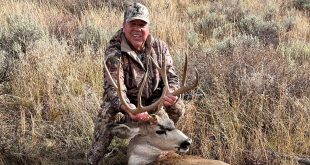
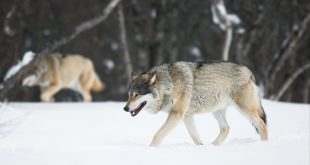
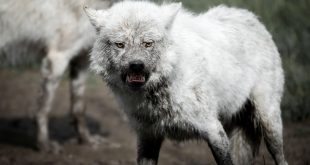
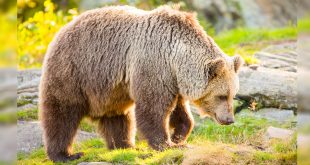
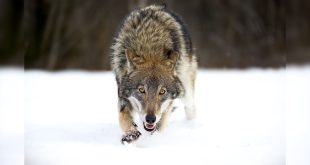
I hunt the area that is proposed, I am a Wyoming resident, and here’s how I see it: There are inherent risks grazing domestic cattle public land in a wild landscape such as the GYE. The Taylor Grazing Act(1934) appeals to grazing on public ground for pennies on the dollar simply to create a greater yield/dollar, it does not provide insurance for safety of animals. Grizzlies were almost extinct in 1975- the recovery has been good, but it expands from an epicenter. That epicenter is near the proposed kill area. The reason for apex predator expansion of range is density and competition within its own species. Killing bears in this area will only create a void to be filled by more bears. NOT SOLVING A PROBLEM. Stabilization of populations will occur overtime, and there will be lower bear densities in this specific area. I deal with bears in this area on a daily basis for most of the year they are not the problem, prioritization of human industry is. These are public lands, cattle don’t unequivocally get priority. Keep in mind, hunters are animal activist too.
Perhaps you should think about that next time you eat a steak or put on a pair of leather boots
1. I eat elk, deer and antelope 2. Synthetic materials weigh less and don’t get saturated like the out of date leather boots. No disrespect, but maybe that explains why you’re still eating beef steak….
I think it’s just another way for animal rights group to play the game! They don’t care about cows or the land! They just want no hunting! Having outdoorsmans against each other is the goal and it’s working! Protect all the predators and all the deer and elk will be down to a number that no one will be able to hunt them… win win for them!! Just look at other states the black bear and lions. States with no trapping….. If we the sportsman and sportsladies dont get our act to together our kids and grandkids will only get to hear stories about hunting elk and deer. Would love to see us all come together and fight for them! The west is a awesome place for sure!!
I generaly agree with most articles of public use of US Forest lands, but I must take exception with ranchers rights to graze cattle. The idea that the beef steak on my plate may have come from cattle grazed on public lands is quite possible, but far more likely that the steak or roast went to feed someone in Japan. We export an amazing quantity of beef to Japan & several other mostly asian countries. I have nothing against these people & would like them to have the same opportunity for a healthy diet as most of us have. But I do not see the need for the cattelmans drive to increase profits with the use of our national forests for grazing. I include the few grazing horses & the sheepherders too. I would like to see them all removed from US Forest Lands.
While some ranchers may face a loss of income & the ability to export, not all will, & we will still have steak on our plates.
As for the people who imported this beef, they will still be able to find it thru other markets.World wide there is no shortage of beef.
People tend to forget the benefits of grazing unless there are huge forest fires. What is conservation? Wise use of resources! Ranchers and cattle make the forest resources better, even if they are annoying.
I can’t say I support the animal rights activist groups on most issues. And I can’t say I care much about the ranchers. All I know is my experience through 4 decades of observation while scouting, hunting, and fishing in the west, is that the ranchers lobby has too much power. In their sometimes overly entitled minds, they believe they own it all, the water, the feed, the access, the say. Many have an attitude of kill everything that walks on rangeland so it can’t compete with their livestock and profits. I tire of having my trail cams filled up with cattle, I tire of not being able to take a drink of water from a spring because of the wallows and mucky mess the cattle make, I tire of seeing the lush forest floors in the spring only to have it turn into dust bowls as the cattle move up into higher elevations during the season. I tire of cow mess everywhere (i.e. my boots, trails, campgrounds, everyplace). It would seem that ranchers have all the say, their way or the highway. Well I care about the health of our declining wildlife and not the heavily subsidized ranchers that won’t let you on their land, and treat our public lands like they are the sole owner. They can be taken down a few rungs. More power to the conservationists and shepherds of the wildlife, “The American Hunter”.
Bart, great perspective. There is a better balance out there that benefits all users and objectives. Thanks for sharing your opinion.